Daoist Academy
The Daoist Academy is a training center that offers a comprehensive approach to the study of Daoist alchemy.
The founder of the academy, Jie Kong (also known as Oleg Cherne), established the institution in 1987.
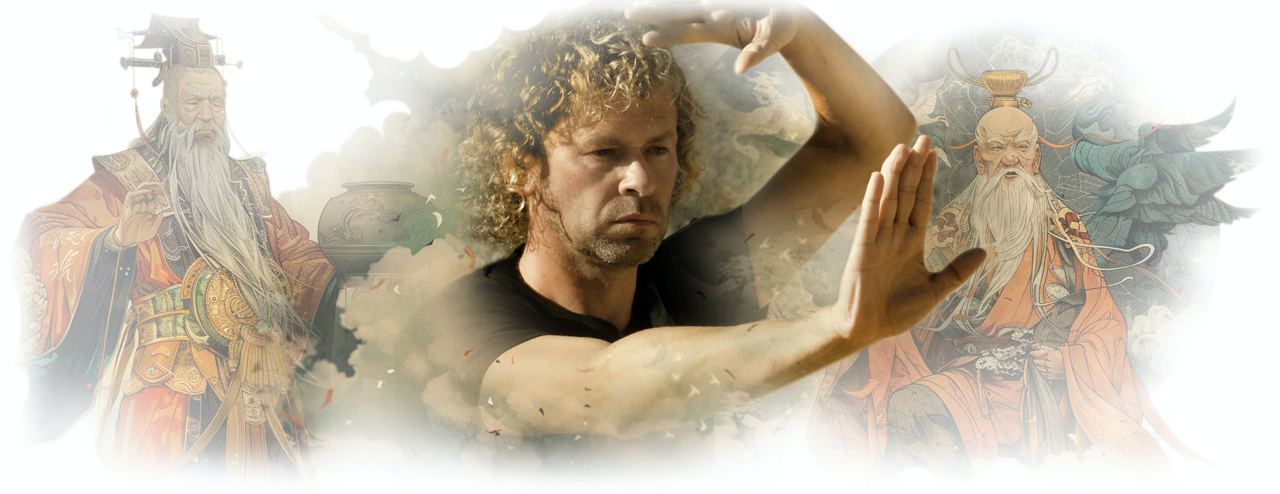
The Daoist Academy is a training center that offers a comprehensive approach to the study of Daoist alchemy.
The founder of the academy, Jie Kong (also known as Oleg Cherne), established the institution in 1987.
Daoist alchemy is a unique path of self-improvement and internal transformation, aimed at achieving harmony between the physical, emotional, and spiritual aspects of being. This ancient practice has a multifaceted approach to personal development, combining elements of meditation, (breathing) exercises, philosophy, and metaphysics.
First Steps on the Path of Daoist Alchemy
Before delving into the world of Daoist alchemy, it is essential to recognize the importance of preliminary preparation and attunement to the practice. Starting involves developing a foundation for inner work, which allows for a harmonious combination of prenatal (innate) and postnatal (acquired through life) aspects of existence, as well as the mental patterns (how do we think).
This process includes reevaluating habitual patterns of thinking and learning, developing the ability to self-learn and adapt. Attunement to the practice involves not just physical and emotional preparation but also mental, creating a solid foundation for further development.
Three Foundations of Inner Development Practice
Daoist alchemy offers a comprehensive approach to inner development, involving preparation and growth in three key aspects:
Daoist alchemy is a complex and multifaceted practice that requires patience, perseverance, and deep self-knowledge. The path of Daoist alchemy is a journey to inner harmony, self-improvement, and ultimately, to understanding the higher truths of existence.
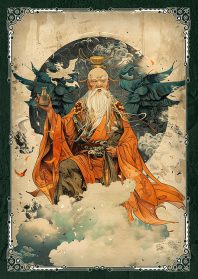
(zhengzhi fayu jichu)
According to Taoist concepts, the time connection in modern man’s prenatal nature is disrupted, and as a result people do not fulfil that, which is pre-destined to them by the Heavens. Therefore, Taoist alchemy practitioners needs to shake off heavy energy and form new and improved energy chains.
This is achieved with the help of one of the fundamental states in developmental Taoist alchemy, which is called the Unity of Heaven and Earth (Tian Di He Yi, 天人合一). This involves a certain quality associated with the attunement to the Highest Limit. In order to attain this quality, we need to free ourselves from our dependence on crude energy.
Attunement to the Highest Limit can be achieved through the Art of the Flying Mouse (feixing fu shu) – a practice that (when all the necessary conditions are met) allows one to obtain the elixir of the Hidden Spring (Da Chun Tian Jin Dan). This practice also helps us create the Perfect Mind (Zheng Zhi Fa Yu Ji Chu).
The basis for this work is a special effort in the mind, which is described as the connection of Heaven and Earth, and correlates with the mental strength generated in this practice, which is associated with the name of the immortal Zhang Guo Lao (張果老). The Art of the Flying Mouse reveals the functions of the Jing and Shen energy, and also directs us towards deepening our practice.
In the Taoist tradition, the Flying Mouse symbolizes the process of rebirth and the mental attunement needed for maintaining the alchemical process. In addition, the image of the Flying Mouse is associated with a state of conscious (mental) dominance in the practice, which leads to a brain state where we can control not only the body, but also space.
In the context of our practice, this means developing skills and efforts that are uncharacteristic of the basic state of the brain. This can ultimately help us understand the process of dissolving the body, as well as the process of transformation.
The Art of the Flying Mouse lets us form the Zero Gravity elixir, which helps us free ourselves from our dependence on heavy energy. Thanks to natural energy (namely orpiment and realgar), an alchemical solvent (vinegar) is formed, which, already at the first stage of the practice, helps change the properties of qi-jing energy to qi-shen.

Attuning your body can help you prepare yourself, your body and your mind, for the art of practical development. This is a fundamental prerequisite for body development and the initiation of alchemical work with the body. To attain this fundamental prerequisite for initiating bodily transformation (shen ti gai zao ji chu), first we have to learn to perceive the body as a multi-level structure. And in order to form internal support, we must develop our ability to perceive everything when working with one, which over time leads to an understanding of the One Body.
In Daoist tradition attuning the body is understood as the art of regulating the external and the internal. This is one of the oldest systems of exercises aimed at maintaining the human body, energy and mind according to the laws of development of The Middle Way.
This practice is very ancient and it is connected with the so-called Peach Forest. The Peach Forest is associated with the medical knowledge of ancient Daoist alchemists and physicians, such as the legendary physicians Hua Tuo (華佗, 140–108 AD) and Dong Feng (东风) who lived during the period of the Three Kingdoms (220–280), as well as Zhang Zhong Jing (张仲景, 150–219).
Attuning the body can help to simultaneously maintain your health, improve your inner strength and prepare you for alchemical work. This practice is based on a combination of internal forces that help open (Kai, 开) and close (He, 合) the body, twist and unwind, stretch and squeeze, strain and relax, divide and connect. A fundamental concept of this practice is the Preservation of the One which is connected to the idea that the movement of energy within the human body follows a set of rules reflecting the concept that all processes in the body are linked to a single source – a place where all bodily energy is collected.
By attuning the body, we can understand it as a certain volume or container made up of various bodily systems. What is more, we do not simply understand this but we learn to feel it. The blood, lymph, tendons, and in time even secretions and cells are perceived as the building material for our body. Energy is no longer something abstract, but instead we are aware of it, and can analyse and structure it.
Over time, practice becomes a tool for developing our state, and it helps transfer the practitioner into a higher level of existence. There comes a time when lifting and lowering, bending and unbending, twisting and unwinding, stretching and squeezing, etc. become actions that involve all bodily systems – which is consistent with their true state and needs.
If we want to achieve natural circulation of energy in the body, our body must be internally as open as possible. This refers to the control of the external and internal volume of the body. The external volume of the body is regulated by the feet, knees, hips, abdomen, chest, shoulders, elbows, hands and head, which act as energy storage containers and valves that can increase or decrease the movement of energy in the body.
The internal volume of the body is regulated by twelve meridians – the meridians of the liver, lungs, heart, stomach, spleen, large and small intestines, bladder, kidneys, pericardium, the triple burner and gall bladder. The internal containers are the source of control over the autonomic muscle-tendon force and the secretory-chemical force.
When a practitioner reaches the necessary level of energy production inside the body, this leads to a change in the operation of all internal energy carriers. This concept is the key to understanding all Daoist systems and practices based on the idea of attuning the body.
When the practice is seen as a means for maintaining vitality or health, then the internal effort, which can be used in the work with our body, is not important at all. However, if we consider our practice from the perspective of changing ourselves and acquiring additional internal resources, then we must conceptually change the functioning of our body.
To do this, the body must minimize and, if possible, completely prevent the loss of this type of energy that is used for achieving internal transformation and change. This is the jing energy. Jing is produced by the Yin-Yang force, which forms a circulation-retention connection and allows the two internal forces to interact with each other to generate a more complex type of energy.
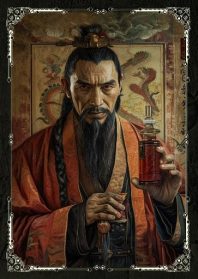
The basis for the development of the alchemical process, or the basis for the development of the Immortal embryo, is the prerequisite for the formation of internal effort (understood as a pill) associated with the influence of the mind upon the area of energetic conception. This effort is also associated with the concept of Daoist meditation.
Daoist meditation is a phenomenon that requires not really an explanation, but rather practical mastery, as it is a structural technological process. This process is based on the knowledge of internal improvement, which is described with the help of a set of hexagrams and is associated with attunement to Daoist alchemy.
The practice of Daoist meditation originates from the contemplative and mental principles of the teachings of the Shangqing school (school of Supreme Clarity), which belongs to the Maoshan tradition. These principles determine the style and character of what can be called Daoist meditation. This practice is characterized by the following processes:
Mastery of direction
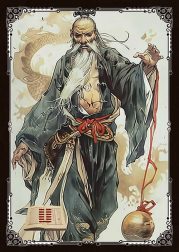 Mastering the direction, or understanding the Path, is related to the organization of the development process. It combines the nature of the primordial energy jing and the prenatal mind, linked to our personal middleness or deviations (the inability, relatively speaking, to connect the higher with the lower, or Heaven with Earth). This process is described by the Fu hexagram.
Mastering the direction, or understanding the Path, is related to the organization of the development process. It combines the nature of the primordial energy jing and the prenatal mind, linked to our personal middleness or deviations (the inability, relatively speaking, to connect the higher with the lower, or Heaven with Earth). This process is described by the Fu hexagram.
Mastering the direction allows us to take control not only of chaotic energies, but also of the causally formed nature of the mind. Gaining control over the body and mind helps to streamline the energy and preserve the spirit in the heart-mind concept. This is the most important prerequisite for furthering our alchemical work. Mastering the direction is the basis for understanding the mutually generative work of body and energy.
This work must start by focusing our attention on the distractions of the mind, as a distracted mind cannot achieve harmonization, due to a lack of concentration. Such a brain is not focused on the middle state. Therefore, mastering the direction helps eliminate all factors that interfere with and impede harmonization. So, Daoist ideas are not so much focused on calming the mind, but rather on the renovation of the mind with the goal of achieving harmonization and the middle state.
Improvement in Daoist alchemy is linked with having control over the mind, which requires concentration, developing a true intention, and focus on maintaining the task, that is, keeping the mind in a certain toned state. Until we replace the chaotic qi with a more perfect jing, we will not be able to improve in our practice and learn how to cultivate shen energy.
Mastery of reflexivity
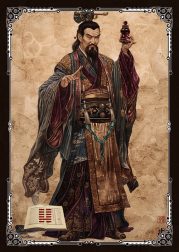 An important aspect of the alchemical work is reflexivity, which begins with the process of energy accumulation. The main task here is to gain mastery over our state/ position or to learn to understand the body at rest. This process is described by the hexagram Shi.
An important aspect of the alchemical work is reflexivity, which begins with the process of energy accumulation. The main task here is to gain mastery over our state/ position or to learn to understand the body at rest. This process is described by the hexagram Shi.
Mastering the position is a necessary prerequisite for the accumulation of energy, which allows you to experience the body in a state of rest. This requires that we learn how to work with the mind and the body at rest (i.e. understand accumulation), so that we can rely on our internal qualities and use them in the practices involving movement.
Rest in movement and movement in rest are key concepts in Daoist alchemy. The body at rest allows one to achieve balance and harmony, while movement at rest allows one to understand the concept of depth.
Reflexivity also allows you to solve the primary task of the practice, which is to restore your vital energy. Since our body is the seat of our spirit and energy, we need to first reduce the dissipation of energy, resulting from the disturbances in the body and mind.
Mastery of internal nutrition
 Mastering internal nutrition solves the problem of additionally imported energy. This energy can be accumulated via various processes – from saliva nutrition to the energy of food. This additional energy may be internal or external qi, which affects the preservation of the original jing and the process of energy breathing. This process is described by the Qian hexagram.
Mastering internal nutrition solves the problem of additionally imported energy. This energy can be accumulated via various processes – from saliva nutrition to the energy of food. This additional energy may be internal or external qi, which affects the preservation of the original jing and the process of energy breathing. This process is described by the Qian hexagram.
Mastering internal nutrition is not only the most important prerequisite for cultivating internal breathing, but also an important factor in the nourishment of our bone marrow (and spirit). This is the main effort aimed at restoring and organizing the internal space of the lower cinnabar field. In addition, having achieved moderation with respect to external food, we can also turn to our internal nutrition.
Mastery of internal breathing
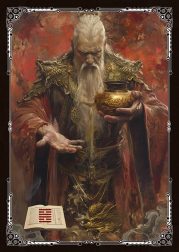 Mastery of internal breathing is associated with the Li hexagram. This is the process of attaining energy breathing, where breathing is initially understood in the same way as internal nutrition. This process helps to develop the perception of the energy of the breath.
Mastery of internal breathing is associated with the Li hexagram. This is the process of attaining energy breathing, where breathing is initially understood in the same way as internal nutrition. This process helps to develop the perception of the energy of the breath.
Achieving balance and inner peace is the primary task of internal breathing. This is the depth that our practice must achieve. The mastery of internal breathing is based on the internal nutrition effort and involves primarily the change of qi energy to jing energy, which is used in external breathing.
Mastering internal breathing, just like mastering internal nutrition, is an important prerequisite for nourishing our bone marrow (and spirit). This is the main effort aimed at strengthening and organizing our internal space. By moderating ourselves in external breathing, we strengthen our internal breathing.
Mastery of the mind
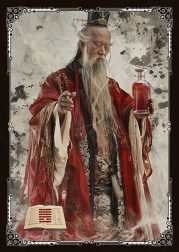 Mastery of the mind is associated with the Tongren hexagram. It refers to the knowledge of spirituality – the true original goal, which is the basis of alchemy. The way to achieving this goal is through a gradual advancement of the internal effort, which leads us to the idea or delineation of the external and the internal consciousness. Working with the mind is of primary importance in the alchemical practice, as it activates the processes of nourishing our spirit, which is correlated with the development of contemplation.
Mastery of the mind is associated with the Tongren hexagram. It refers to the knowledge of spirituality – the true original goal, which is the basis of alchemy. The way to achieving this goal is through a gradual advancement of the internal effort, which leads us to the idea or delineation of the external and the internal consciousness. Working with the mind is of primary importance in the alchemical practice, as it activates the processes of nourishing our spirit, which is correlated with the development of contemplation.
Mastering the nutrition of the mind allows you to improve both consciousness itself and the processes associated through it with internal nutrition, internal breathing and internal movement (energy circulation). We need to have command over our minds not in order to be in the practice, but in order to master the alchemical work, even the purification of the mind is part of the alchemical process.
Mastery of the energy
 The most important among the fundamentals of alchemical work is the mastery of energy circulation, which allows us to manifest our original nature (this determines the properties of our energy reserve), as well as to develop our ability to accumulate energy. The mastery of the energy is associated with the hexagram Tai.
The most important among the fundamentals of alchemical work is the mastery of energy circulation, which allows us to manifest our original nature (this determines the properties of our energy reserve), as well as to develop our ability to accumulate energy. The mastery of the energy is associated with the hexagram Tai.
Gaining knowledge and mastery over the energy is the most important task on the Daoist path, as it leads us to the stage where we work with the ultimate. This work is based on the ability of the lower cinnabar field to control the internal processes. This helps to develop internal harmonization, which forms the proper directed efforts and frees us from the distractions of the mind.
Initially, the control process is used as a way to eliminate all interferences and impediments hindering internal harmonization, however later it becomes a way of managing the harmonization process. In addition, this helps us to manifest our original nature, which determines certain qualities and properties of our energy reserve.
We must first realize what is given to us, before determining that which is brought in. Knowing and mastering the energy is an important task on the Daoist path, leading us to work with the ultimate.
Mastery of the alchemical process
 Completing all the previous stages opens the path to understanding the alchemical process, the alchemical ingredients and elixirs. This is described by the hexagram Da’yu (Da-yu).
Completing all the previous stages opens the path to understanding the alchemical process, the alchemical ingredients and elixirs. This is described by the hexagram Da’yu (Da-yu).
The perception of the process itself takes time, therefore it can be approached via the examples of obtaining a particular elixir (for example, the Circulating elixir associated with orbital torsion or the elixir of the Hidden Spring). What is important is the ability to bring ingredients into the lower cinnabar field and the mastery of the mind of the lower cinnabar field (the embryo mind), as well as the availability of an internal effort used to maintain the process (maintaining a certain tonus).
In the journey of mastering Daoist alchemy, every practitioner encounters various obstacles that can slow down or even halt inner work and development. Understanding these obstacles and the methods to overcome them is key to making progress in practice.
Let's examine the four main forms of limitations one might face on the path of Daoist alchemy:
These limitations arise from the influence of the surrounding social and cultural field, which can drag the practitioner into a life rhythm that does not align with their individual path. This leads to the blockage and restriction of the circulation of life energy qi, creating obstacles for harmonization and balance.
Prejudices and mental constructs formed throughout life can lead to perceptions that do not match true experience and knowledge. This form of limitations makes it difficult to accept new practices and methods of working with energy, hindering the deep understanding and integration of Daoist principles.
Limitations of this type are related to deeply rooted beliefs and fears formed at the level of the unconscious. Such a mentality can disrupt the natural rhythm and harmony of a person's existence, preventing the achievement of inner balance and the development of spiritual qualities.
In many cases, a practitioner may encounter a combination of the aforementioned limitations, creating a complex web of obstacles in the path of development. These mixed limitations require a comprehensive approach to overcoming, including deep introspection and self-work.
Overcoming Obstacles
To overcome these limitations, it's necessary to develop awareness, the ability to identify the roots of problems, and apply targeted practices for their resolution. Regular engagement in meditation, (breathing) exercises, and qigong/ tai chi/ bagua practices will help strengthen inner balance and enhance the ability to self-regulate.
It's also important to strive for continuous self-education and to expand one's understanding of Daoist teachings. Doing so will facilitate the breakdown of limiting beliefs and open new horizons for personal growth.
This approach will enable you to incorporate the practices into your daily routine effectively. Moreover, you'll be able to understand the principles of developing qi, jing, and shen energy, establishing an internal rhythm that is essential for forming the basic conditions of practice—return and conservation of energy.
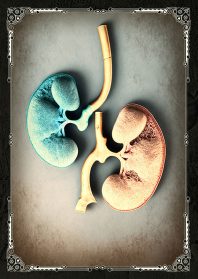
The obstruction of original Qi, also known as the prenatal barrier (yuan qi liu dong), represents a fundamental disturbance or blockage of innate life energy, significantly impacting a person’s comprehensive development. This barrier is manifested both in the limited amount of original Qi received at birth and in the insufficient maturation of the body’s systems or organs, creating physical, energetic, and mental barriers.
The prenatal barrier is a significant obstacle to achieving longevity (shou), which, in Daoist understanding, denotes not just life span but also the ability to manage life energy, a crucial condition for advancement in practice.
When the body is unable to provide itself with the necessary amount and quality of energy due to congenital disorders, improper development, aging, or an inability to assimilate energy, achieving internal changes and transformations becomes impossible.
According to the teachings of the Daoist immortal Lian Cai He (Lian Cai He, 藍采和), to overcome this, one must generate higher-frequency energy (jing energy) and additionally obtain Qi energy to maintain the functioning of the body and consciousness.
In the context of Daoist alchemy, the prenatal barrier is seen as an impediment to the use of alchemical elixirs of orpiment (ci huang) and realgar (xiong huang) — natural components of essence responsible for producing jing energy.
Since Qi possesses not only energetic but also biological potential, any blockage, whether congenital or acquired over a lifetime, affects overall development and, generally, the ability to undergo practical development. With age, after forty years, the life resource of Qi decreases and is maintained by the energy of jing or shen, thus special attention should be given to maintaining prenatal Qi. Age itself can also cause Qi blockage, often overlooked by practitioners.
The prenatal conditions often serve as both an apparent and a hidden cause of life problems, seriously limiting the possibilities for their resolution. Restoring prenatal energy is a complex process involving adjusting the internal rhythm and perfecting the innate principles based on prenatal factors.
Unlocking and restoring original Qi should involve addressing both identified and hidden disruptions and deficiencies, which may have a congenital nature, starting with the vessel of original Qi, or the kidneys.
In this state, the work should be directed towards unblocking and strengthening the vessel of original Qi, which aids in restoring vitality and in improving in producing orpiment and realgar, necessary elements in the process of energy development.
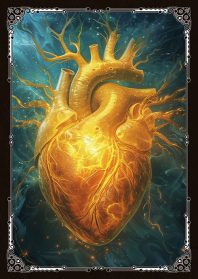
Postnatal barrier is an energetic concept rather than a physical condition. It implies a blockage or disruption that occurs after birth—postnatal—impacting the flow of internal rhythms, energy, and potentially affecting mental and physical health.
In TCM and related holistic approaches, life is understood as a balance of energies, with Qi being a fundamental component. Qi circulates throughout the body along pathways known as meridians and is essential for sustaining health and vitality. The concept of a “barrier” suggests an obstruction that hinders the natural flow of energy, blood, or other vital substances. This barrier could manifest as physical symptoms, emotional disturbances, or barriers to spiritual and personal development.
The concept of the postnatal barrier revolves around the disruption of internal rhythm, affecting blood circulation and heart function. This disruption leads to a multitude of conditions that disturb energy and our mental state, often manifesting in haste and anticipation. In alchemy this issue manifests itself in lack of plasticity or flexibility, suggesting that the quality of our circulatory system directly impacts our capacity for self-realization and practice.
Disruptions in our internal rhythm hinder a comprehensive understanding of our practices and their deeper realities. This makes it challenging to grasp the underlying principles and goals of rhythm within our practices and their combinations. Furthermore, such disturbances prevent us from attaining satisfaction from our practices and achieving a state of harmony.
The heart, perceived as a repository capable of capturing and maintaining various states, plays a crucial role in overcoming these disruptions. Without recognizing the heart’s pivotal role, we encounter obstacles in our spiritual progression. The postnatal barrier impedes the heart’s ability to experience true sensibility, blocking the discernment between qi and jing energies.
Acknowledging the strong link between the heart and the mind emphasizes the importance of managing internal rhythm perception. This management is vital for deepening practice and detaching from external reactions.
Initially, understanding the rhythm of practice might seem elusive, necessitating a deliberate effort to internalize this concept. By engaging with the heart’s substance, recognizing blood circulation, appreciating body geometry, and harnessing concentration power, we can navigate beyond the postnatal barrier towards a more profound practice and self-awareness.
The art of learning is a conceptual prerequisite for improvement. It is achieved when the mind is ready, which should become a constant aspect and expression of the practical path.
To grasp the laws of learning, we must first attune ourselves to the practice and take into account the obstacles we may meet in our internal work. Our mind must be able to rely on the internal effort of concentration, which defines not only our development, but also our understanding of the path.
If our concentration is insufficient, then development is impossible, and we cannot even consciously perceive the art of learning (and therefore cannot even approach it). If we want to achieve certain tasks, we must first master the process itself. The art of learning relies on our ability to observe, record, trace and, as they say, use a compass and ruler, that is, be able to measure and calibrate our efforts.
The most important aspect of the art of learning is to understand the nature of thought creation (analysis), the nature of thought as knowledge and as distraction. And this depends on the mental and energetic qualities of our brain.
The existence of modern man can be called superficial in many ways, but it is impossible to develop when leading a superficial existence. What is required is effort, which today we must develop, otherwise we simply adapt to certain conditions, that is, we do not practice, but adapt to the practice, whereas it is important for us to have direction in our knowledge. Real development begins when we have achieved a state when we can operate with that, which develops us, and we can assimilate the acquired skills and knowledge.
Development is based on a scheme, a method. This is a fundamental condition of the art of learning, as it makes the process meaningful. Only the meaningful development allows one to maintain a constant effort of concentration, and also maintain and achieve certain tasks. This process must have clear guidelines and criteria for improving our physical, energetic and mental properties.
Development is a need, a human function. It is not a temporary process based on desires and reactions, but a prerequisite and an opportunity to immerse yourself in the experience of the infinite.
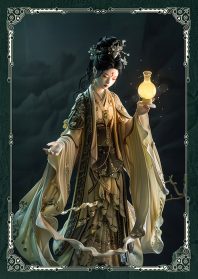
The Art of Energy Reciprocity embodies the essence of mastering the flow and return of energy as an essential aspect of the learning art. This process is instrumental in bolstering one’s inner strength through a deliberate blend of preparation and the mastering skills of managing the body, consciousness, and energy. It reveals that the principle of energy reciprocity aligns more naturally with the female body, attributed to the presence of the uterus, presenting a nuanced challenge for the male physique to assimilate this principle.
Acknowledging this principle as a cornerstone in the realm of energy development and management is crucial. Without actively engaging in refining reciprocity, advancements in practice remain stagnant. Energy reciprocity principle allows us to restore energy balance as well as improve both water and blood equilibrium within the body.
At its core, this principle emphasises harmonising with the natural laws of qi balance, advocating for a focused and energy-intensive approach to enrich this alignment. Such a methodology facilitates not only the conservation but also the augmentation of energy, culminating in the ability to perceive and embody the essence of jing’s energy reciprocity and ultimately, the profound connection with shen‘s reciprocity. This journey towards mastery unfolds a transformative path that enhances one’s capacity to navigate and influence the subtle energies that govern our physical and spiritual existence.
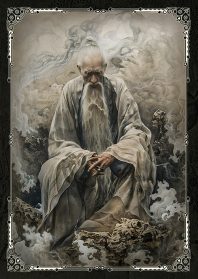
The art of learning is a process that must be mastered over time. A fundamental concept in this art is mastering tools like the compass and ruler. But what does this really mean?
When someone starts learning, the first step isn’t to act mindlessly but to consider how and where to begin. This approach requires developing a mindful practice where consciousness is actively engaged, and reflection on actions becomes a habit. It’s essential to maintain an awareness of the importance of learning skills at every developmental stage.
Our approach to learning often stems from our personal beliefs or experiences. Usually, something or someone inspires us to explore new knowledge. Often, it is our spirit or personal drive that nudges us toward practical engagement. However, truly measuring success in learning requires connecting our consciousness with our inner spirit.
It’s crucial to remember that no one can offer precise advice without observing your personal learning journey. While it’s easy to suggest focusing on particular areas, such advice often remains a general wish and is subject to personal interpretation. Moreover, without consistency in practice, one’s learning is influenced more by everyday routines than by genuine progress, whether these be mundane tasks or financial constraints.
Today’s challenge is the widespread lack of accountability for one’s words and actions. This reality brings us to the fundamental question of how to start: the key lies in fostering attentiveness to how we listen, speak, implement tasks, and set goals. Genuine development begins only when our actions and experiences converge towards a deep understanding of our involvement in the learning process. Simply directing people to engage in activities is ineffective; instead, we must guide them to introspect first.
I have observed a significant decline in teaching quality, which certainly has its underlying reasons. Modern education often resembles a mere transaction between instructor and student, where many educators focus more on service than on genuine teaching. This shift disrupts both the method and rhythm of delivering educational content, causing a disorientation where learners face a barrage of identical terms and explanations that lead more to misunderstanding than to clarity.
Even true masters and teachers face tough conditions today, struggling with how to continue their traditions amid such constraints and competition. The existing masters are split between those who have become exorbitantly priced and inaccessible, and those who have limited their teachings to a small group of students to preserve their knowledge.
The market today offers everything and anything, leaving individuals confused about how to make choices that align with their needs. Often, people opt for what appears easier and cheaper—or even free. However, engaging in learning is not about paying others; it’s an investment in oneself. The true value of knowledge cannot and should not be quantified.
In the tradition of learning, there is a notion of ‘family,’ signifying a deep and almost vanished commitment. Learners today are forced to ‘monetize’ their knowledge, understanding its value beyond mere participation in exercises. This reality underscores the need for a profound personal and collective commitment to learning and development.
The Art of Learning
When we discuss starting points, mastering the art of learning and analysis is vital. It’s important to recognize that the value of our learning comes not only from what we receive but also from how it is presented. This concept inherently involves a methodology—a systematic approach that fosters growth rather than just a disjointed collection of exercises.
Practice should be viewed as a construction set, something that we need to learn how to assemble properly. Firstly, awareness is key—we need to cultivate focus and concentration in every action. Secondly, maintaining a rhythm is crucial; it’s about creating a technological sequence of actions that facilitate development. Thirdly, we need a balanced combination of actions to avoid getting stuck on one aspect and neglecting others. Essentially, this involves balancing active and meditative practices, with each affecting the body, energy, and consciousness in different ways.
One of the largest challenges we face is acknowledging our prenatal nature, which can halt our progress at certain stages. Understanding our inherent nature and potential can take decades because it requires developing specific methods to unlock insights into our spirit and nature.
At the outset, our consciousness lacks the depth of penetration needed for profound development. True development is about overcoming our flaws, not indulging them. Regardless of circumstances, we must work on enhancing our mental capabilities. Often, even those with favorable prenatal qualities encounter limits that seem insurmountable. Real development begins when you immerse yourself in the process of development.
This developmental process necessitates constant attention to growth, self-harmonization, and a well-structured approach. We must understand that possessing a coherent internal architecture is crucial. Furthermore, rhythm is essential and perhaps the most complex concept to grasp because it transcends conventional notions of time. To truly progress, we must break free from traditional temporal constraints and live within the process.
This doesn’t imply a non-stop engagement from dawn to dusk. Instead, it means each of our actions should be deliberate and mindful. If our actions are out of sync, it signifies that we aren’t truly engaging, highlighting the fundamental importance of rhythmic harmony. Achieving a harmonious state changes the temporal dynamics of our existence, allowing us to connect with the spirit’s nature, marking the true beginning of development. Thus, genuine progress starts not on a whim but through achieving consistent inner stability—even during conversations, maintaining this constancy is essential.
Reflection is crucial. Hastily finding answers before fully understanding the questions or focusing on them is risky—it reflects a reflexive rather than a reflective mindset. Modern education often relies on a functional rather than a thoughtful approach, shifting towards practices where individuals struggle to find personal relevance or understand their needs. When someone fails to grasp the concept of ‘need’ and the essence of necessity, they default to instinctual desires.
Everyone starting on this path wants quick results, but true development is an ongoing process. Chasing after specific outcomes is futile because the real value lies in the journey itself. Life is a continuous process, and distinguishing between the process and the outcome becomes irrelevant once we embrace this mindset.
It’s vital to remain open to learning, requiring a strength that allows for openness. Understanding respect for knowledge, and even the concept of space, demands that we first develop our internal space to appreciate the external world.
Moreover, we must come to terms with our inherent limitations and gradually distance ourselves from them, as they are not easily discarded. Until a person achieves harmony, they cannot effectively manage their ego, which varies in strength among individuals. To genuinely navigate this, one must learn to increase their energy frequency, returning us to the concept of rhythm.
Regular engagement prevents our energy levels from dropping. Conversely, disengagement leads to a decline controlled by what we refer to as the ego, creating significant obstacles. We must accept ourselves as we are and diligently monitor our actions. Handling the ego, like any behavior, depends significantly on our ability to analyze and correct mistakes, which requires sustained concentration.
Observing our lives, we often find repetitive patterns because we haven’t overcome certain challenges. Knowing what to do in difficult times is essential. Not knowing represents a profound struggle. Therefore, practice should nourish, improve, and ultimately satisfy us.
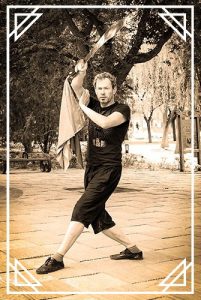
The life path of Jie Kong (CHOM, Oleg Cherne) is a story of relentless pursuit of self-knowledge and liberation from the shackles of his personal biography, overcoming through learning from masters and periods of hermitage.
He has dedicated over 45 years of his life to a deep exploration of Daoist knowledge, Zen Buddhism, Daoist alchemy, and internal martial arts, journeying from a novice seeker to the founder of the Daoist Academy.
His travels across Asia, North America, and Europe, living in monasteries and ashrams, enriched his experience and led him to meet teachers who significantly influenced his path. A fateful meeting with Master Yu and the hermit Liu (Master Wu) in Hong Kong brought him into their spiritual family and bestowed upon him the name Jie Kong, meaning "Disciplined and Mysterious." Under their guidance, Jie Kong underwent unique training, learning the subtleties of transforming the body, consciousness, and energy.
An important part of his training was the liberation from the dominion of desires and strict control over his life, which allowed him to understand and accept the algorithms of interaction with society while staying true to his inner aspirations. This period became one of the most significant and mysterious in his life, affirming the true value of knowledge as a force capable of transforming reality.
Today, Jie Kong serves as a living example of the importance of consistent development at all levels of being - from physical and energetic to spiritual. His life is filled with clarity, purpose, and a true understanding of the essence of existence. His commitment to discipline, rhythm, and constancy reflects his deep self-knowledge and responsibility to himself and the world.
Jie Kong has proven that for a true Master, the external social structure is of little importance; what matters most is one's personal spiritual framework, which allows finding harmony in the architecture of knowledge and being in unity with the surrounding world, regardless of its chaos and misunderstanding.
Form cannot be considered the essence of substance, although some sources try to assert this. Essence is manifested in the laws of the prenatal, but not in the laws of the postnatal, where the form interferes. However, as essence is expressed by the form, form also depends on essence. This means that the form should be changed so that it does not interfere with the essence even if it does not depend on it. Moreover, such a form, in which the essence is not oppressed, must have the appropriate proportions.
This leads us to the question: Why do thing exists? Human nature, or man’s essence, can be examined either externally or internally. To do this however we need to penetrate into the mother’s womb and rebuild our true nature. Rebuilding our nature is easier than knowing it. The next question we face is: How can we delineate the boundaries of reality?
The boundaries of reality
The boundaries of reality are set by the conditions for penetrating into our primary essence, this is why it is important to create one’s own conditions. When we talk about proportions, we talk about a conditional womb that can give birth to a new self. The Chinese term dong means womb, cave, it also refers to a mysterious process; simply put, it refers to depth, which ignorant people perceive as a transcendental concept. But for those who are immersed in the practice, this is a special reality.
Alchemists use special techniques so as to obtain the “correct body” – a body endowed with an essence, or a body dominated by the spirit. In order to obtain the power that allows one to transform the body into spirit, or to subjugate the body to the spirit, one should change the energy properties of the form, i.e. undergo a transformation associated with the concept of initiation.
Transmutation, bodily immortality, and the means to achieve these ends, are a matter of knowledge and practical diligence. On this path, the body goes through a long process, becoming an Alchemical body, then a Mercury body, and then it starts producing alchemical gold, achieving material or alchemical luminosity. However, to achieve this, first we need to understand elixirs, as they are the most important component of the alchemical science.
The boundaries of reality give us that primary matter that cannot be decomposed, but can only be dissolved and assimilated. Note that understanding the difference between decomposition and dissolution is vital.
Medicines or elixirs that will prolong human life can be prepared with the help of botanical, mineralogical or chemical knowledge, however what is important here is the question: Can we assimilate these? We can rejuvenate the body and the spirit only if we change the energy frequency. This, of course, can be achieved externally, however it will not be considered eternal life.
The Daoist concept of material immortality is harmonious, reasonable and consistent. But if Daoists (or any Asian culture) are unprejudiced towards this concept, the Western mind faces great difficulties here, as Western people are psychologically unprepared and lack the mental focus needed to grasp even the basic principles of this concept. Thus, the weak mind is detrimental to the alchemical model, but a one-sided obstinate mind, which violates the rhythm of the practice, is equally dangerous. Both result in the adept waiting or hasting.
Naturally, alchemy has its pharmaceutical, dietary, respiratory, fitness and even sexual aspects, however its fundamental concepts are the compass and the square, or the circle and the square, where the circle is consciousness, and the square is the body. Without a hammer and anvil, it is impossible not only to create something, but also to start working, start the process. How can you turn lead into gold? Or how can you improve yourself?
Unless we define the centre (the Yellow source) and learn how to measure, we cannot implement the alchemical doctrine, i.e. we cannot cultivate the immortal embryo. Our goal is aurifaction, that is, we must not imitate alchemy, but we must achieve real results.
Alchemical science consists of thirteen operations (processes), and its main focus are all the stages that lead to the creation of the Mercury body and the Alchemical body. The primary task of alchemy is self-improvement, which relies first on prenatal nature, and then on postnatal nature, when the already purified and enhanced mercury (spiritualized jing energy) penetrates into the depths of the body and absorbs qi. The very concept of mercury in alchemy is multi-layered: it is both a process, and a certain state of the body; internal fluidity, which leads to the concentration of energy.
Gold in alchemy refers to the state when we have built the proportions and have the perfect energy. Note that there is a difference between having built the proportions when the qi energy is dominant, and a proportionate state when jing and even shen are dominant – in the latter case the conditional mercury itself disappears, and only gold (or perfect connections in the body) remains. Then the body itself becomes partially or completely immortal and can never be transformed back into mercury.
However, one should not confuse the processes associated with the transmutation of the essence (or the soul) with bodily transformation, or else the shen energy will be disrupted. It is risky for the adept to get carried away in the restoration of qi or even its transformation, as this can cause decay rather than improvement, and it can also prevent the adept from improving the shen energy.
If we rely on qi, we cannot extract the finer jing energy, which means that we cannot form the middle and upper cinnabar fields, and we cannot extract enough mercury from the lower field. Mercury is activated in the cinnabar fields through qi (lower), jing (middle) and shen (upper), but it is extracted through the jing energy. Therefore, our focus is qi-jing, jing-jing and shen-jing.
Daoist alchemy is a knowledge system, a worldview, which underlies the process of personal transformation and lets you free yourself from all crude energy by transforming it. Its fundamental concepts are based on the knowledge about the Macrocosm and the nature of the Soul. Its basic principle is the nurturing of the soul (shen) and its elevation to the rank of the Absolute, or the Yang concept.
In the Chinese tradition, Daoist alchemy is also known as the Art of the Yellow and the White, or the Way of the Cinnabar – this is a system of practical knowledge aimed at developing the abilities for energy regeneration and conversion. This leads to a partial or complete transformation of the body through the gradual cultivation of the germinal pill located at the confluence of the prenatal energy Su Yun Liu Cheng Yin.
Daoist alchemy was formed as a result of the need to overcome the temporary (actually, death). The most intriguing and interesting aspect here is that initially the human body was perceived as a kind of consciousness. The life and immortality of the mind achieved through the Mother Body state (a body endowed with a crucible) became the main impulse for the formation of Daoist alchemy.
This is why, if we want to understand Daoist alchemy, we need to comprehend the following two concepts: the original consciousness and the developed consciousness. Of course, at the beginning of its formation, when nature had a different rhythm, and people had a different energy intensity, the primary model for Daoist alchemy was the Woman. According to Daoist ideas, the female body is by nature whole, that is, it is capable of transformation, (a process that must be taken under control) – these are in fact the characteristics of the Alchemical body.
A body that is whole follows the basic energy principle: energy conservation and accumulation, alchemical cultivation and transformation. If energy cannot be accumulated, the mind cannot control it. This is why it is so important to form the Alchemical body and the Alchemical mind at the very beginning of the path. In fact, the female body and mind have these characteristics by nature, i.e. by nature the female body is characterised by certain energy processes, associated with the concepts of the Flower body and the Purified body (silver).
This materialization and transformation of life processes leads us to the concept of the Jade Emperor, or the circle of transformation, consisting of the three energy conditions qi, jing and shen. What is in fact important here is the way these three kinds of energy combine with each other, forming trigrams, which are the precondition for consistency. A trigram is a knot, a connection that forms six conditions in space, or a hexagram.
Thus, the Alchemical body formed through alchemical practice is a kind of body capable of internal transformation. Its creation is the most important prerequisite for achieving a deep transformation. The alchemical body has the ability to change many natural processes, it does not rely on natural temporary energy, but on transformed energy, which harmonizes the inner forces and forms timeless parameters.
The Alchemical body is a body that can create additional energy resources by changing the energy frequency, this is why it has specific physiological and biochemical characteristics. Daoist alchemy focuses precisely on the improvement of these factors.
Meanwhile, the simple form of the body cannot be considered the essence of the substance. The essence is revealed within the laws of the prenatal, and not in the laws of the postnatal, since the form interferes here. The essence is expressed in the well-proportioned form.